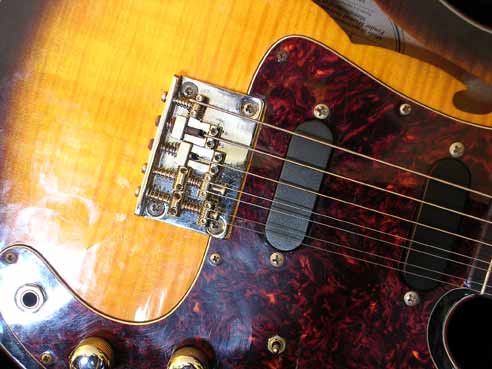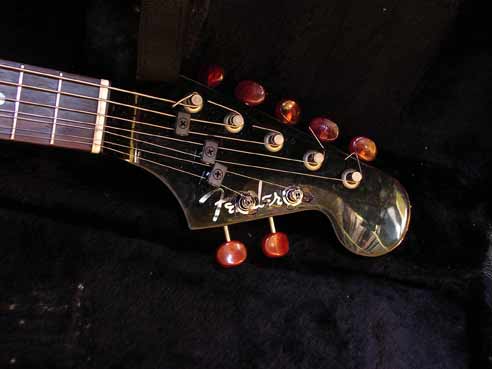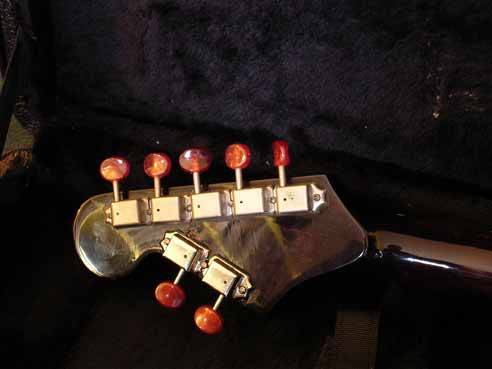My first real attempt to modify an instrument
probably came when I was in my early teens. My first drum set
was used and consisted of a 26” single lug Ludwig bass
drum, a Slingerland radio king snare drum, an 8” hi hat
and a 14” ride cymbal about 1/4” thick. It cost
$60 and I paid for it installments of $10 a month for 6 months.
After it was paid off I bought Zildjian cymbals new, an 18”
crash ride and 13” hi hats and threw the other cymbals
in the St. Lawrence River. Because the bass drum was so big
you could barely see me behind it so eventually I bought a 20”
Ludwig kick drum and added a used 14” Ludwig floor tom
and a 12” Kent rack tom.
The drums were all different colors and I saw an ad in Downbeat
magazine that offered plastic covering to recover your drums.
I bought enough gold sparkle material to cover all my drums
and for most of the years I was in high school and college I
played that gold sparkle kit. The material was fairly thick
and by the time Soft White Underbelly was playing in the New
York City area the material was warping and trying to come off.
One night when we played at Steve Paul’s Scene in midtown
Manhattan Jimi Hendrix and Ringo Starr came to our show. Jimi
wanted to jam and I told Ringo he could use my kit. He politely
declined and eventually Jimi just jammed with Jeremy Steig,
a flute player. After the show the house manager came up to
me and said, “You really should get a better kit. Ringo
might have played if your kit wasn’t so bad.”
When Soft White Underbelly got their first record contract with
Elektra records I bought a Black oyster-pearl drum kit (which
I used for every BOC recording and still have) and gave the
gold sparkle kit away. All I have left from that adventure is
the cardboard tube that the gold sparkle came in and the black
oyster-pearl covering that used to be on the Kent drum which
I put together to make a stick holder and still use with my
practice kit.
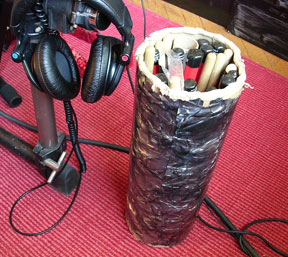
The next major project for me didn’t come until many years
later when I was working on the Imaginos album and Sandy Pearlman,
my manager, suggest I check out this avant-garde artist named
Glenn Branca. He had these instruments made out of two by fours
and guitar strings and pickups and made an awful but impressive
racket. I wanted to try my hand at this idea and had some ideas
on how to make this instrument better. I bought the two by fours,
got some steel pipe, and guitar tuning pegs and my roommate,
Tommy Morrongiello, gave me some old pickups he had lying around.
I wired it up and attempted to use it on the Imaginos record.
Everybody liked how it sounded acoustically but plugged in it
made the racket as bad as Branca’s original. We never
used the takes and the Albertron went to storage. A few years
later I decided to try to make the instrument more viable. I
took the original two by fours and put tuning pegs at both ends,
made the strings half the length, put only single coil pickups
beneath them inserted a volume and tone pot, painted it black,
put some front legs on it so it would stand up and added some
pretentious lettering. This instrument has a sweet and haunting
tone and has been used on almost every Brain Surgeons album.
Check out the intro to Stones in My Passway on the Trepanation
album to hear it in its glory.
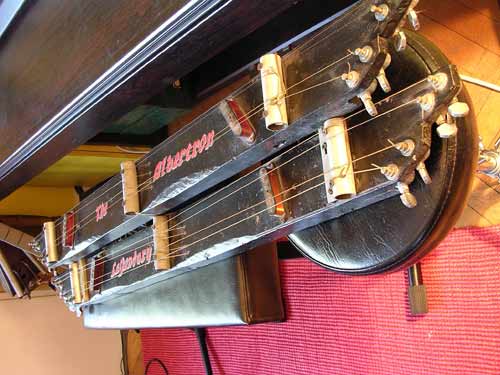
In the past few years my gear mod lust has raged. I used a Harmony
Central mod that my brother, Jim, gave me to give my Boss SD-1
a smoother tone. I modified my microphone stand with a drumstick
stuck in the third leg (all singing drummers should know this
one) to give it more stability when extending the boom arm so
I can get clearance for my left arm when I’m playing loud.
I added a Hipshot tuner, Seymour Duncan Lightning Rod J bass
pickups and a Gotoh string-through bridge to Deborah’s
Fender Jazz bass. We also took the pickgard off and Deborah
added an old New York City token in the original router hole,
turning a stock Mexican J bass into a luxury sedan of basses.
Deborah’s stock Fender Strat has gone through 4 sets of
pickups with the current combination consisting of 2 Fender
noiseless pickups and one Seymour Duncan Hot Rails pickup in
the bridge position. My Stock Fender Tele has been routed out
to accommodate a Gibson P-90 in the middle position and another
Hipshot tuning peg added.
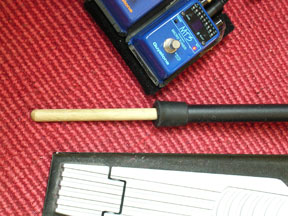
Drummers check this out
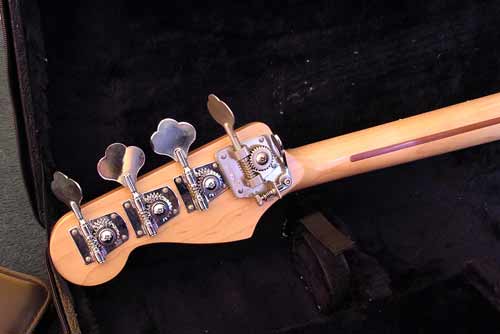


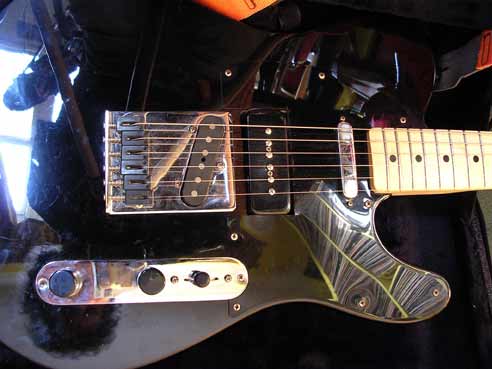
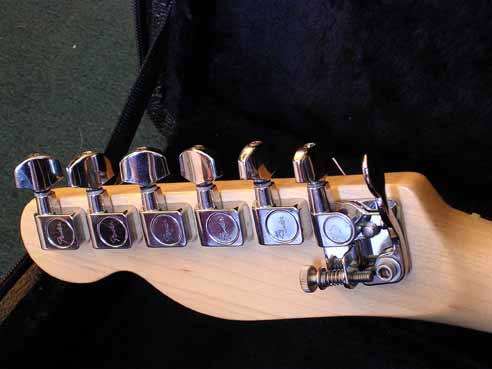
My latest mod is to my Fender Mandocaster. I have played this
five string electric mandolin for several years now and have
been frustrated with how it doesn’t sound enough like
a real mandolin. I have put it through all kinds of chorus pedals
and it still sounded like very high pitched and out of tune
guitar. I’d been thinking that what made it not work was
the sound of the two unwound high strings. If only those two
were in the traditional pairing it would sound more authentic.
I tried it out by tuning the top two strings to the same note
and it did sound better. I decided then that my five string
needed to be a seven string to give me a truer mandolin tone.
I found similar Kahler tuning keys with white plastic buttons
online and also found plastic amber buttons. I heated up the
white plastic buttons over the kitchen stove, pulled them off
and melted the amber buttons onto the tuning keys. I then had
to make a tough decision because the most logical position for
the extra tuning pegs was in the middle of the attractive abalone-inlaid
Fender logo. Art had to make way for science. In a way the logo
still looks good it just doesn’t say Fender anymore, maybe
Feodero or Feolero. Hey that’s how Randall Smith, of Mesa
Boogie, got his start, chopping up Fenders. I also had to modify
the bridge saddles to accommodate the dual string pairs for
the two top strings. I ended up using the bridge saddles from
a Fender Jazzmaster and put a couple together to properly intonate
the strings. The next mod to this instrument will probably be
the pickups because I am still not completely happy with the
tone and it does get noisy when turned up loud. Stay tuned for
more adventures.
